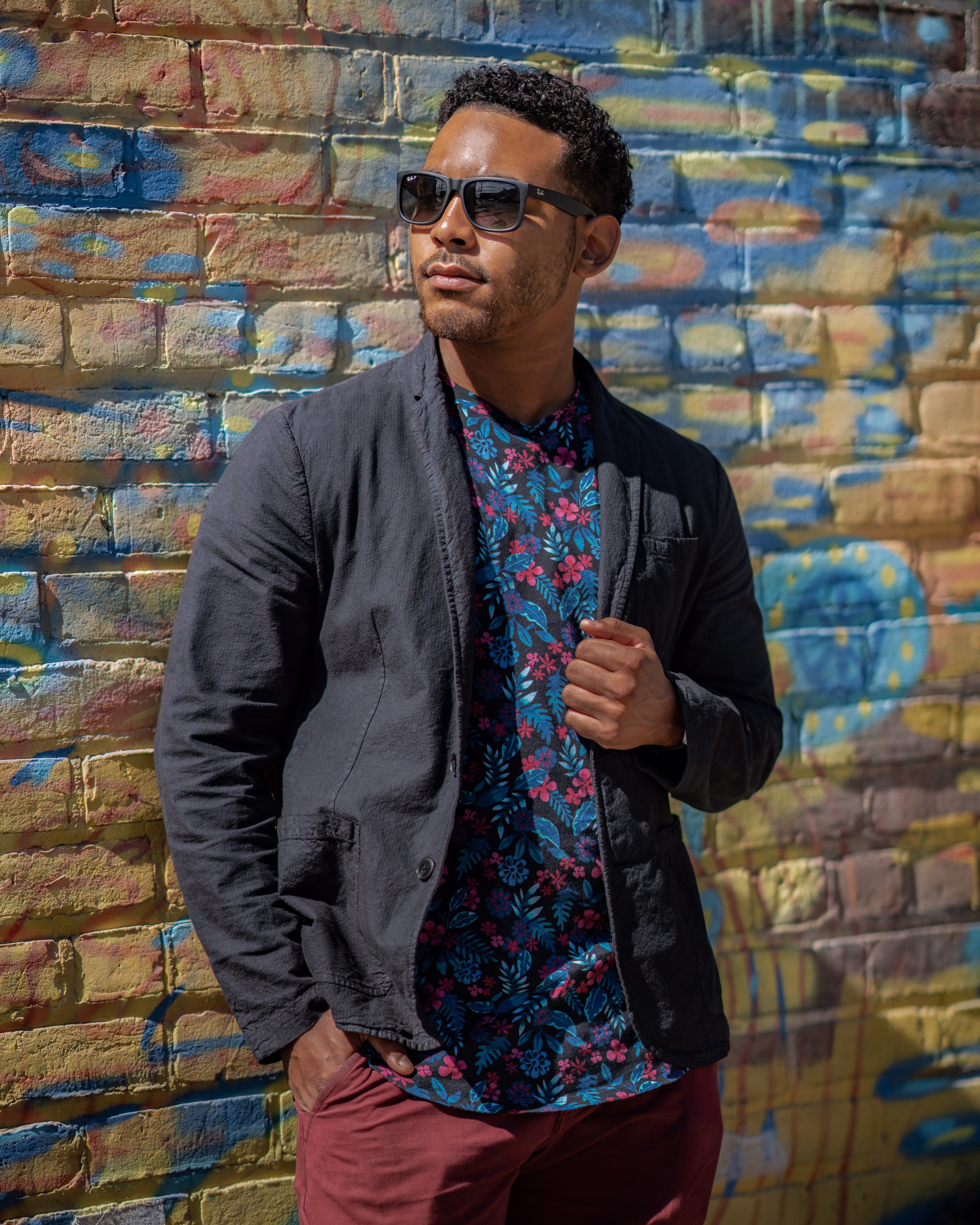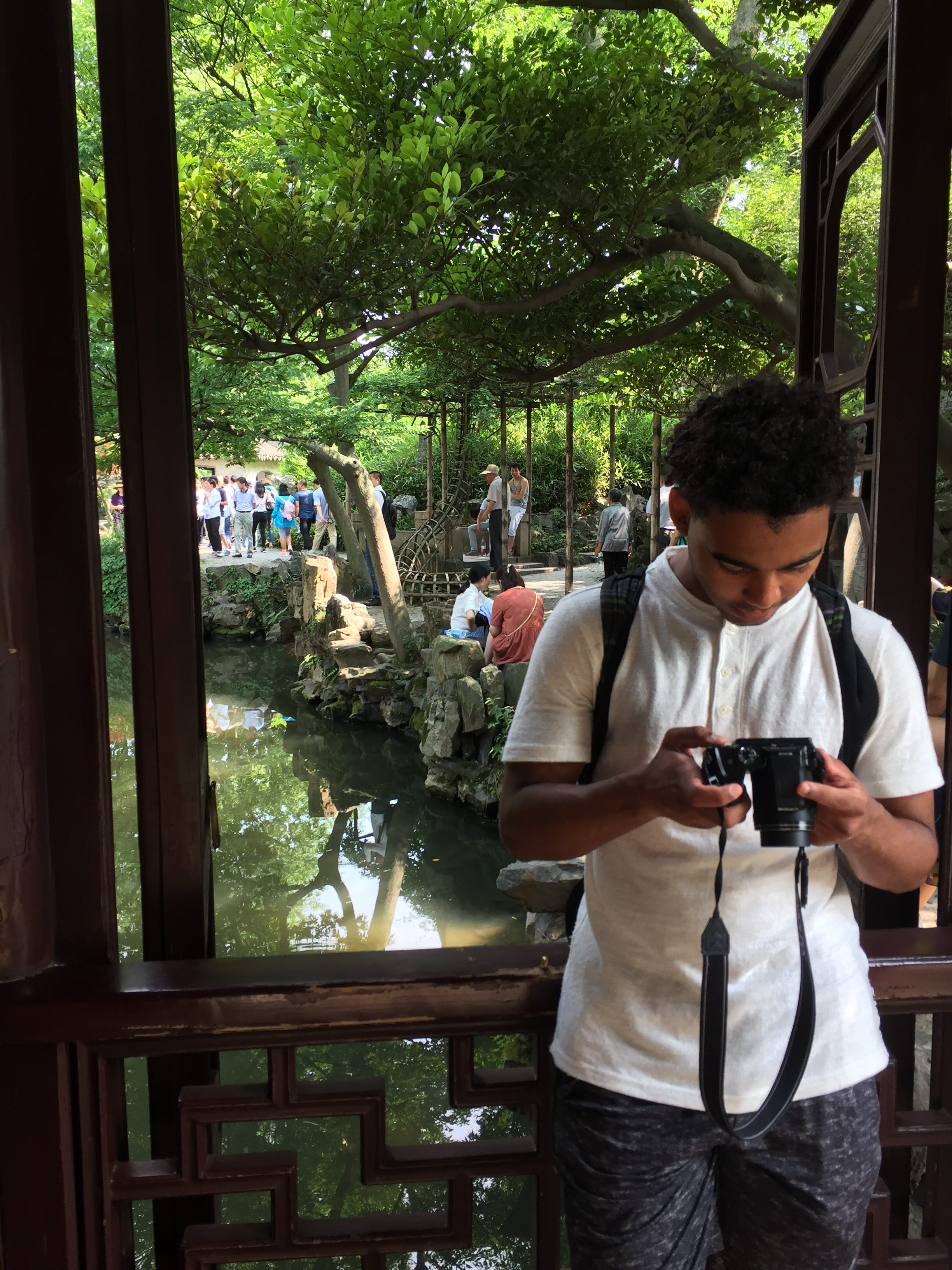
Jordan Anderson. (Photo by: Casey Cazeaux)
New Years Eve, I told a friend of mine about the idea of a project that focuses on the intersection between art and science.
“How? They’re two completely separate things,” he said.
I was baffled. How could someone I deemed so intelligent not see the clear-cut conjunction formed between these two schools? I realized that growing up the son of a musician and a doctor made it natural for me to understand their relationship. I was curious of his assertion, so I asked my friend what he supposed the distinction to be.
“Art is expressing feelings based on personal belief or strife. Science is the obsession with understanding how things work.”
This left me with even more of a conundrum. If it were true that art and science were so different, then why would it be that a sculptor needs to understand anatomy in order to properly express the human face, and why would it be that an artist requires a general knowledge of physics and chemistry in order to understand color? A friend of mine, Danielle James, had once been a psychology major on her way to psychiatry. In her transition to theater, she mentioned she still uses her psychology background everyday in her plays. “You need to understand people, how they work, and how they respond to different situations in order to be able to masquerade as different characters.”
The mind is divided into two hemispheres: the left and the right hemisphere. Neurons are the cells that compose these hemispheres and carry electrical impulses that we use to think and interact with the environment. Although the left hemisphere is said to govern logic and the right hemisphere is said to govern creativity, “logic” neurons and “creative” neurons are not exclusive to one hemisphere. The mind is a complex inter-networking of neurons that draws between art and science and drives the human mind to express itself and uncover a greater understanding to each day. This interactive web makes it clear how people like Michael Crichton, writer and producer of Jurassic Park, could go to medical school despite also having a passion in creative writing and film production.
In today’s world, many of us are asked to choose a career almost exclusively left brained or right brained. The reality is that everyday and in everything we do, we use our whole brain. Therefore, I want to create awareness of the bridge between art and science for individuals with betwixt interests, and for those who feel whatever choice they make will not fulfill their passion.
I, myself, have struggled with finding security in my own interests. I grew up in the rich art culture of New Orleans, around the performing musicians in the French Quarter and among talented individuals at NOCCA (New Orleans Center for Creative Arts). I even attended the Louis Armstrong Jazz camp each summer throughout middle school. I kept up with my artistic interests by taking creative writing and marching in my high school band; but, I also began to excel in my math and science classes too. Eventually, I attended Xavier University of Louisiana, majoring in psychology my freshman year. I chose psychology because I had always been curious of the complexity of the human mind. Nevertheless, as the year went by, I became anxious. Although I enjoyed studying psychology and neuroscience, I had a lack of interest in becoming a psychologist or counselor.
Xavier University in particular is known for sending its students to medical school, so I hopped on the bandwagon. I switched my major to biology. The following year, I switched to chemistry after a fulfilling experience in organic chemistry, a subject most of my peers were disgusted by it. Graduation came and I applied to work in healthcare research. It had not been until I was working in my field when I realized that although I enjoyed learning difficult hard science material, my interest in scientific research and patient care were not as strong as it had been when I first began to pursue medicine.
Throughout my journey of self discovery, many people would try to predict my path for me. One individual had even said that my university “brainwashed” me into wanting to be a physician. In college, I would often question if my passion for creativity was too strong to pursue a science-based career. Now I realize I did in fact have a passion for science, which stemmed from the same roots as my artistic interests: creativity.
I believe creativity to be the fundamental link between art and science. According to the article Left Brain, Right Brain, Facts and Fantasies, “Brain imaging shows that creative thought activates a widespread network favoring neither hemisphere.” With this in mind, passion does not always fit into a particular career. For some people, they shape their own paths and create something completely unique.

Jordan Anderson, exemplifying why science (how does this camera work) and art (I want to take pictures with this camera) always intersect.
I have observed that many people are most artistic when fueled behind their left brain, expressing linear and analytical thought. This is the ability to not only ask questions, but also solve problems through logic that has been applied to abstract thought. This is what the scientific method is. The artistic mind drives imagination of the limitless possibilities and scenarios that could occur by manipulation of what had been observed. The scientific mind drives the desire to understand the possibilities that the artistic mind had created, and conjure them into reality. Take for example how we perceive the life cycle of a monarch butterfly. Part of the monarch butterfly’s life cycle involves laying its eggs on milkweed plants (Asclepias species). Butterfly larvae, caterpillars, only eat milkweed plants. What would happen if all milkweed plants suddenly disappeared? Would monarch butterflies become extinct, or would they adapt to laying eggs and eating the closest available plant?
In essence, humans are creative creatures and problem solvers. We define laws of the universe to make the world we live in less random and more real. We look for patterns, but our minds are abstract. Creativity is the result of a melting pot of expression in science, art, and every school that forms the human being. Each person unique despite the limitations we impose on ourselves to try to make a universal human identity. We tend to follow a linear path that our lives create out of fear of the unknown. The reality is we have 360 degrees of directions, most likely even more. The following series will look into the complexity of the human and our various interests, how they relate and intertwine. I want help many of those that may be lost in the dark after straying from their path to see through interviews, talks, articles and more.
If you have science and art topics for Jordan, you can email him at: theartsciguy@gmail.com.
 NOLAbeings Multimedia artist Claire Bangser created NOLAbeings as a portrait-based story project that marries...
NOLAbeings Multimedia artist Claire Bangser created NOLAbeings as a portrait-based story project that marries...  Voodoo in New Orleans: Reviving history: New Orleans fortune telling This article takes a deep dive into the history of Voodoo in New Orleans, its hybridization with Catholicism, and its present-day place in the city's culture. The author visits fortune-tellers in the French Quarter, using their guidance as a tool for introspection rather than a deterministic predictor of the future. Through her experiences in New Orleans, the author feels a mystical connection to both the past and the future.
Voodoo in New Orleans: Reviving history: New Orleans fortune telling This article takes a deep dive into the history of Voodoo in New Orleans, its hybridization with Catholicism, and its present-day place in the city's culture. The author visits fortune-tellers in the French Quarter, using their guidance as a tool for introspection rather than a deterministic predictor of the future. Through her experiences in New Orleans, the author feels a mystical connection to both the past and the future. 